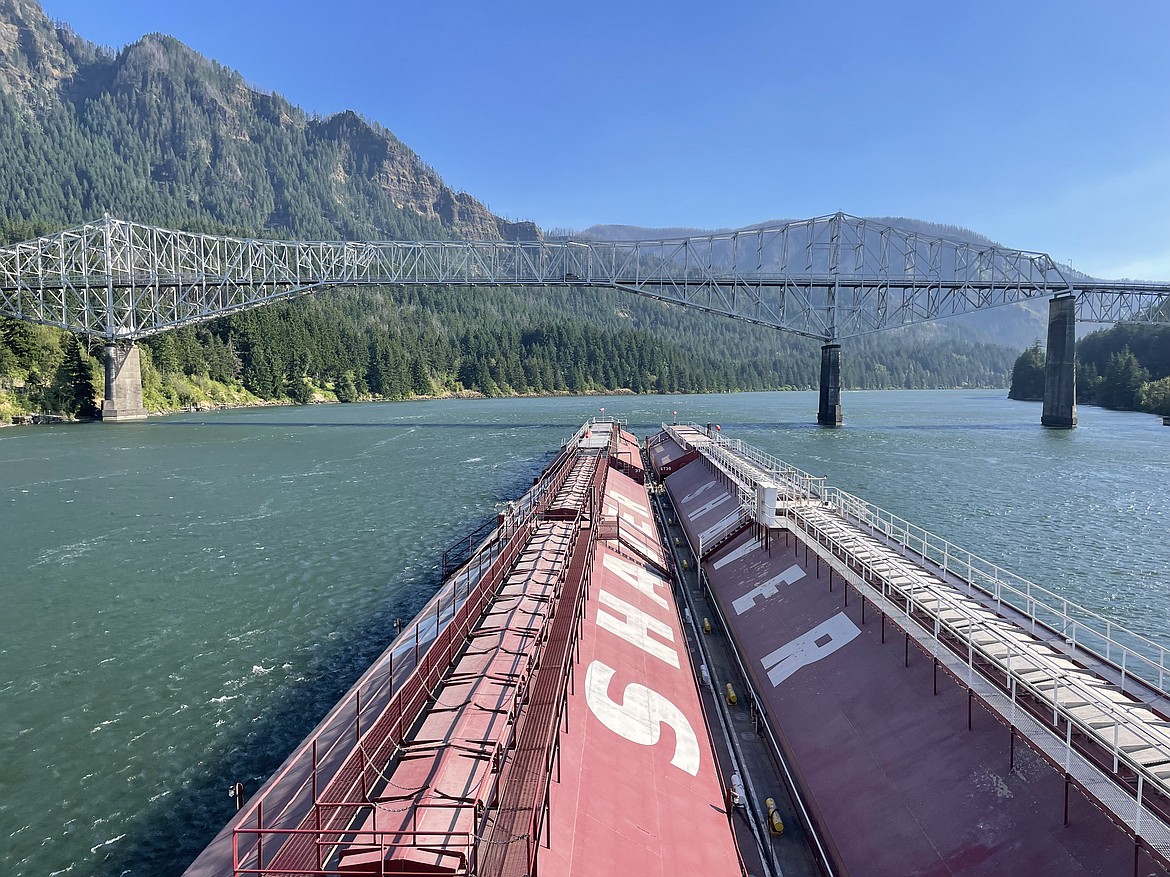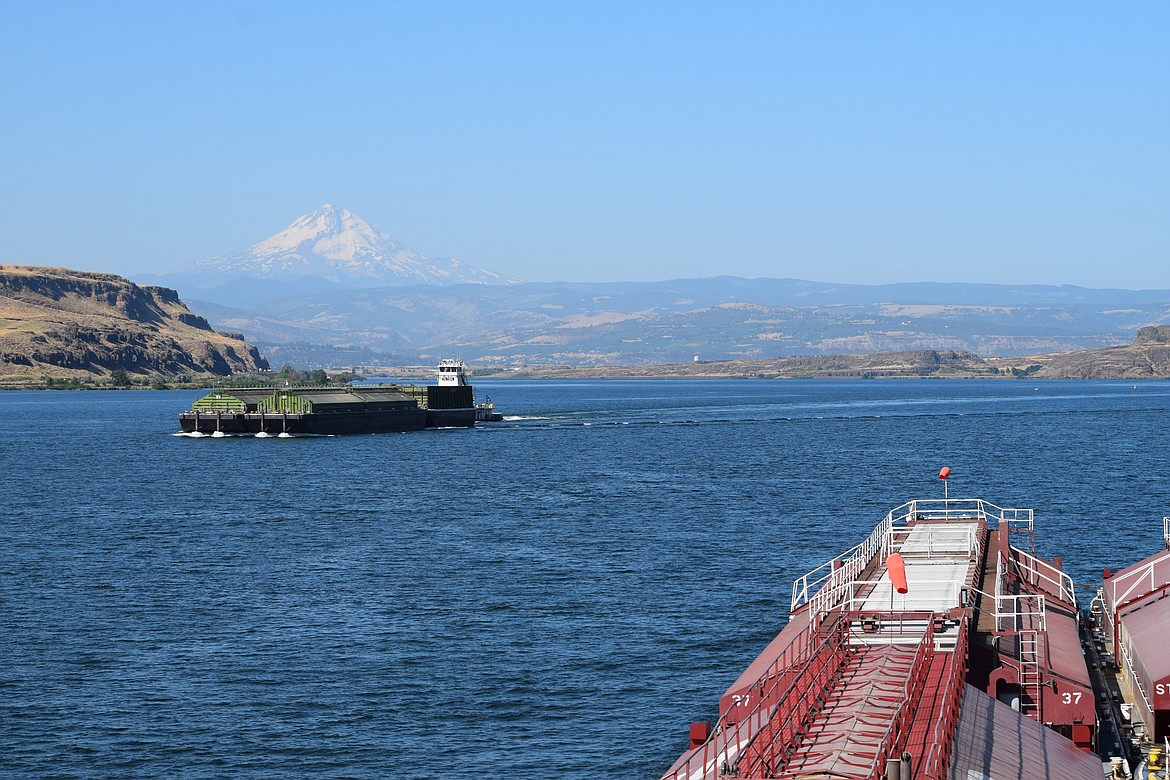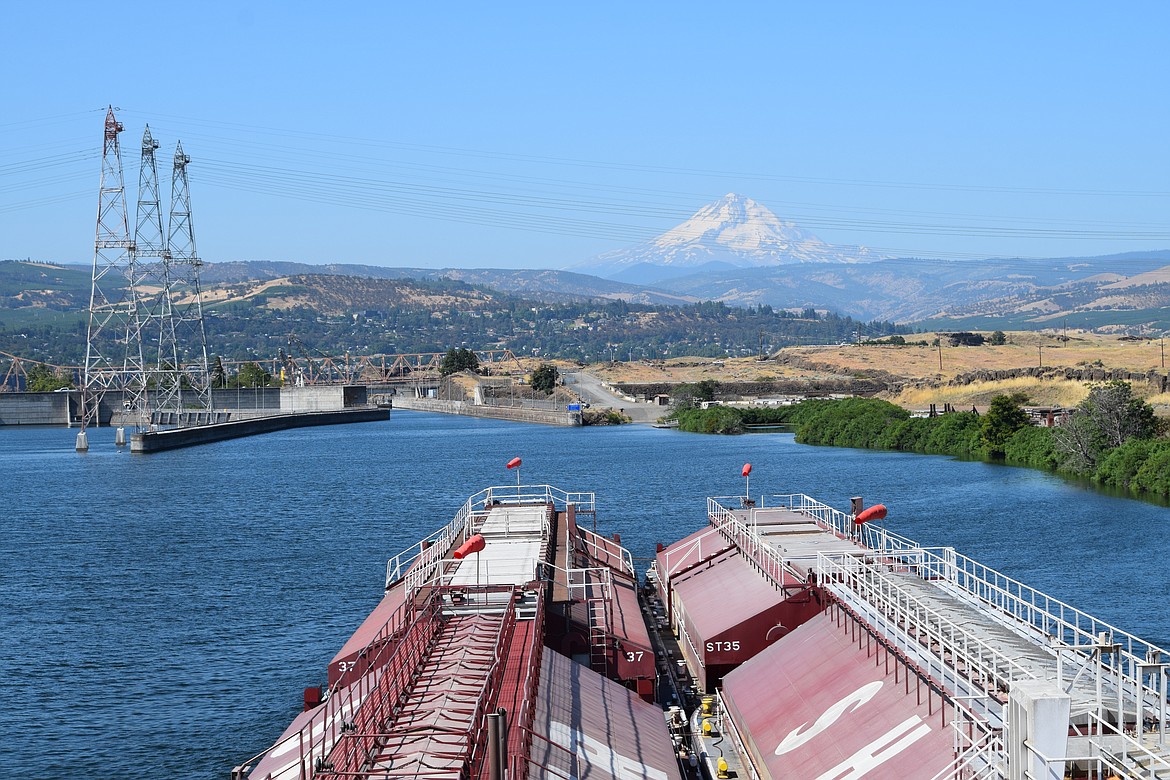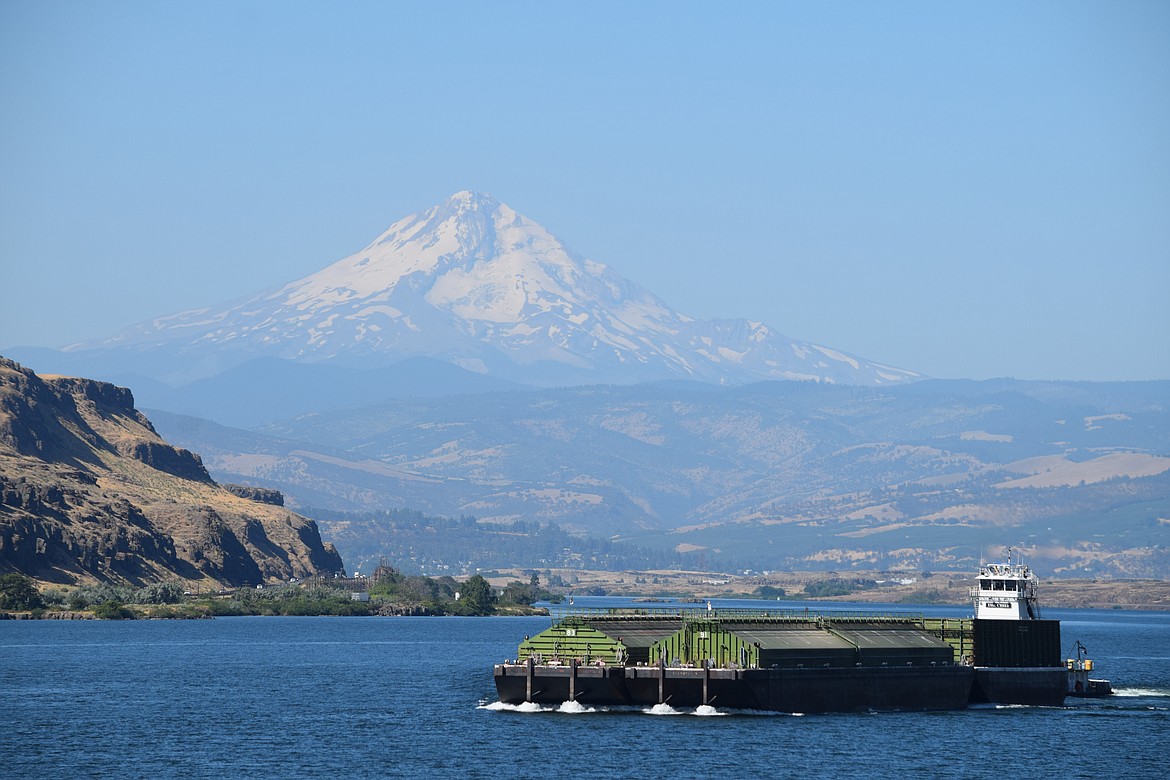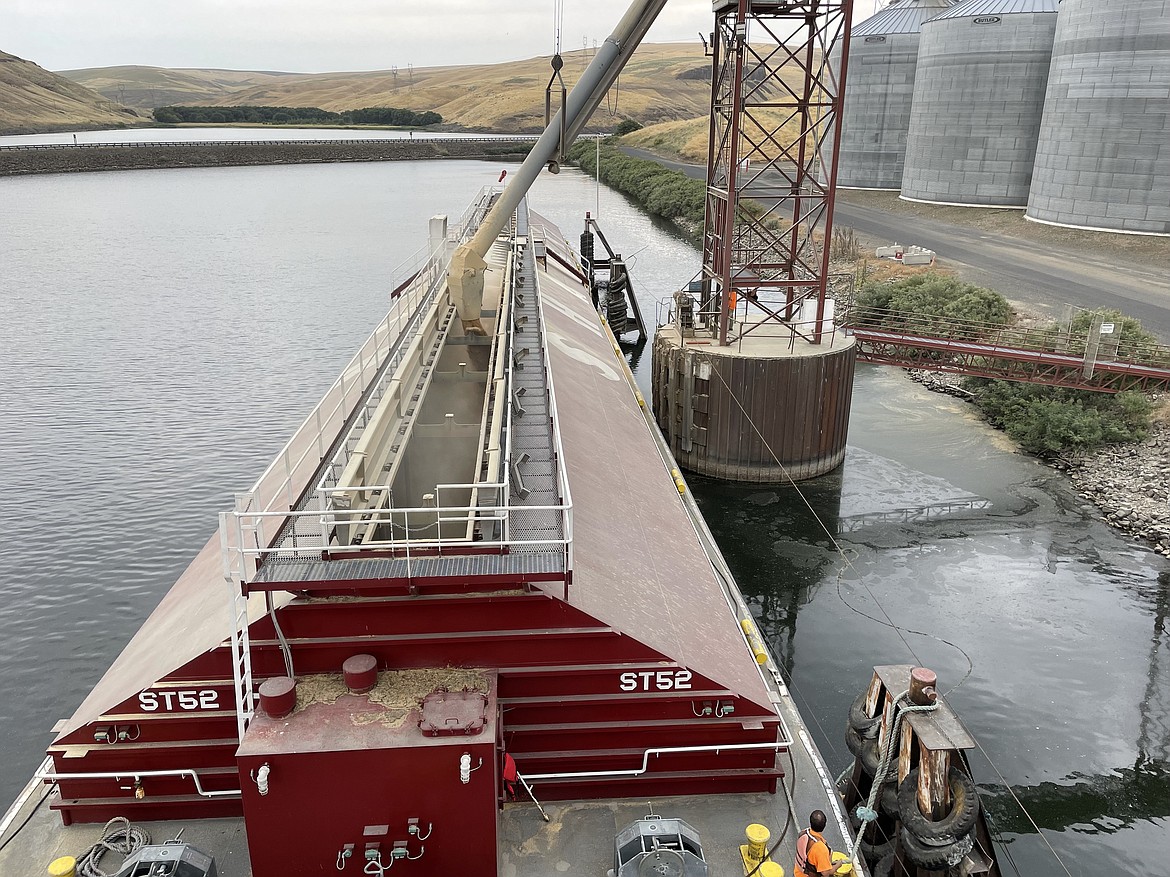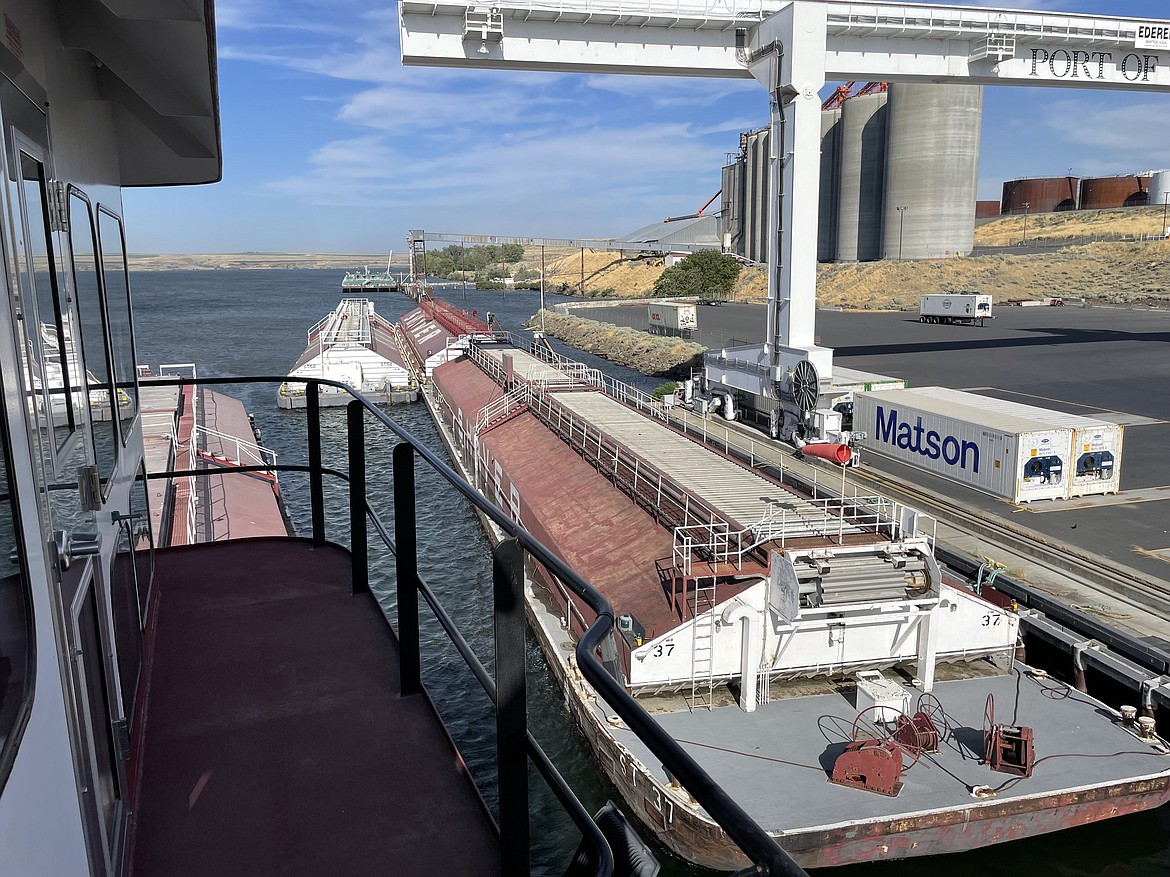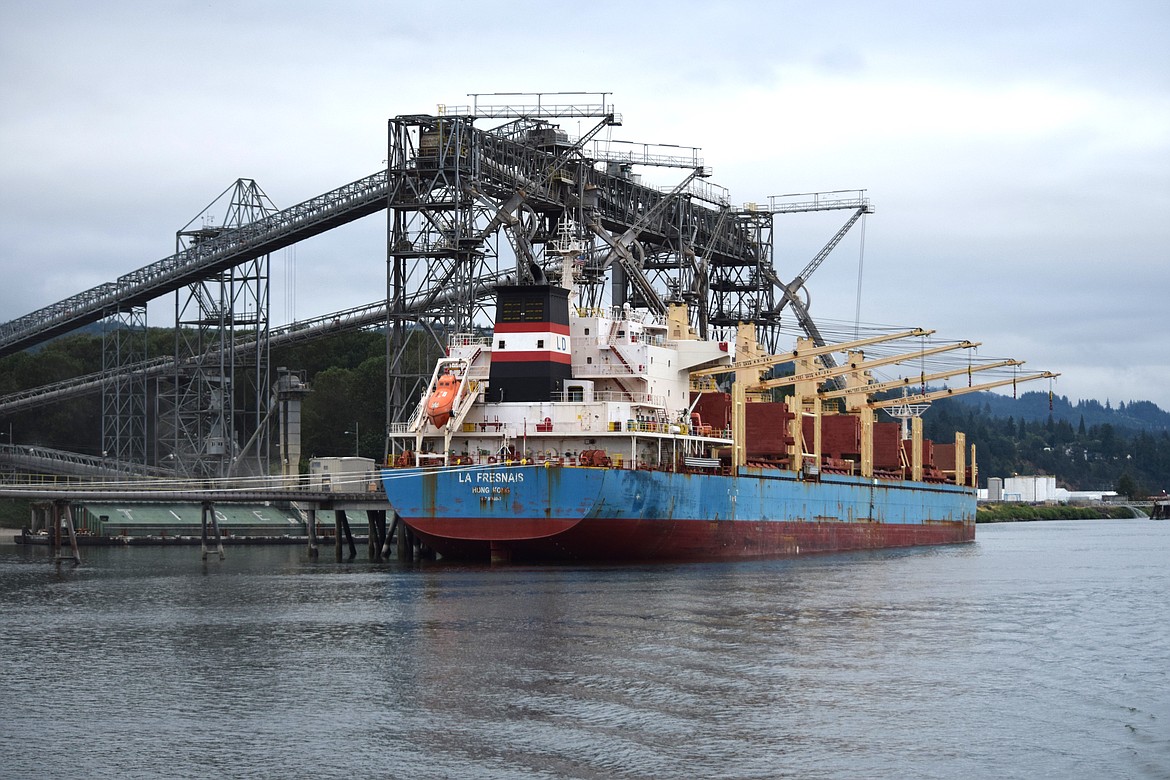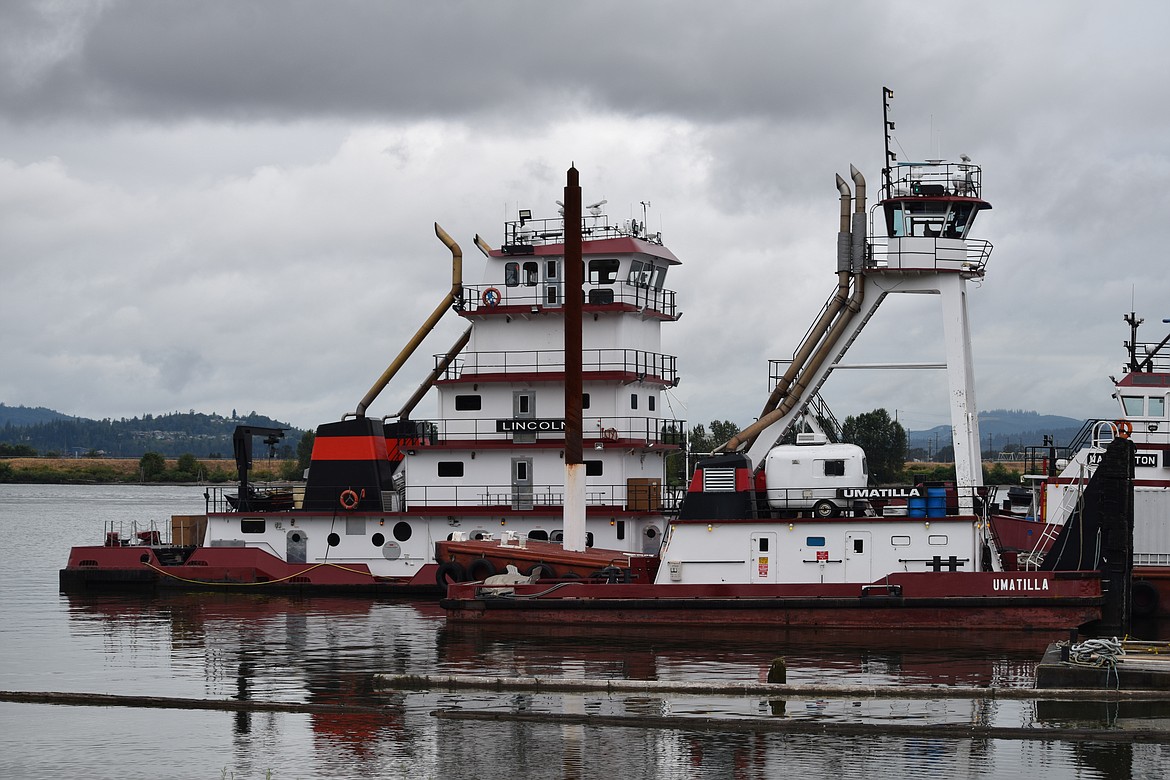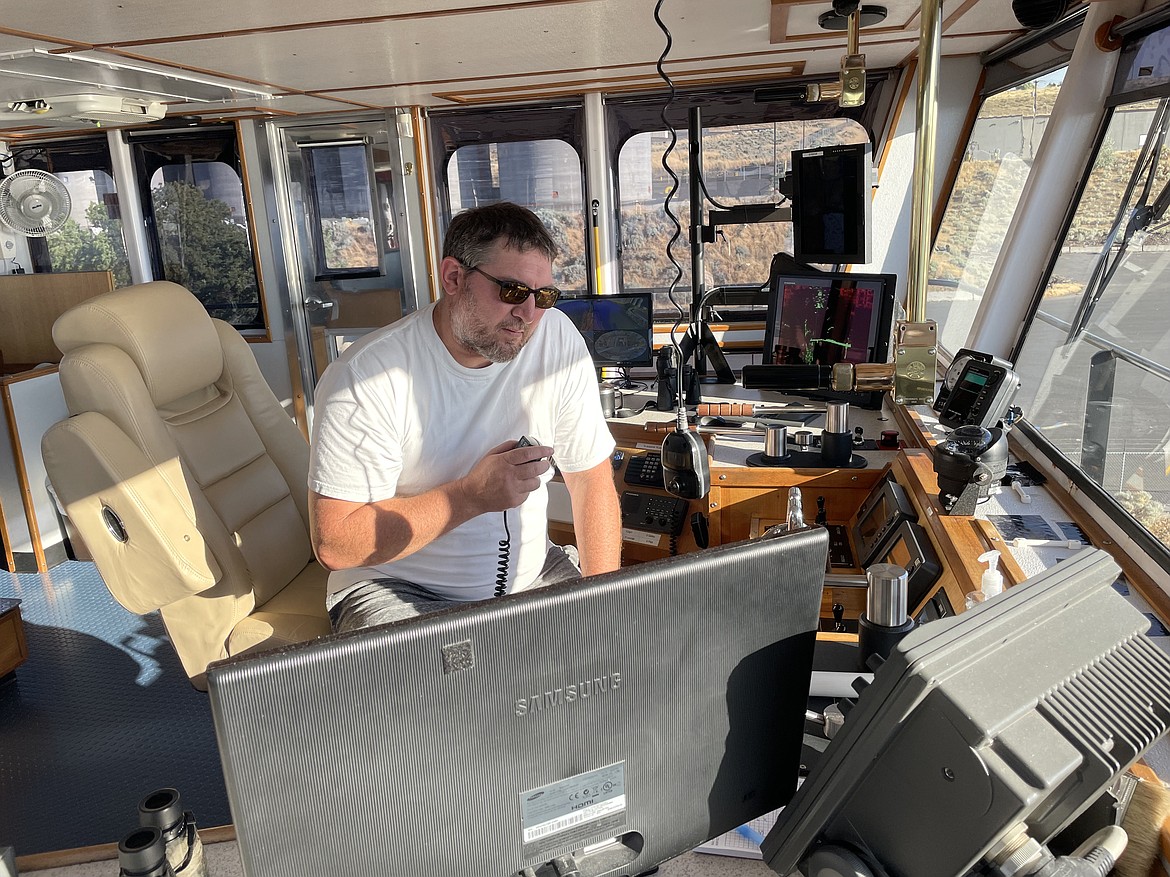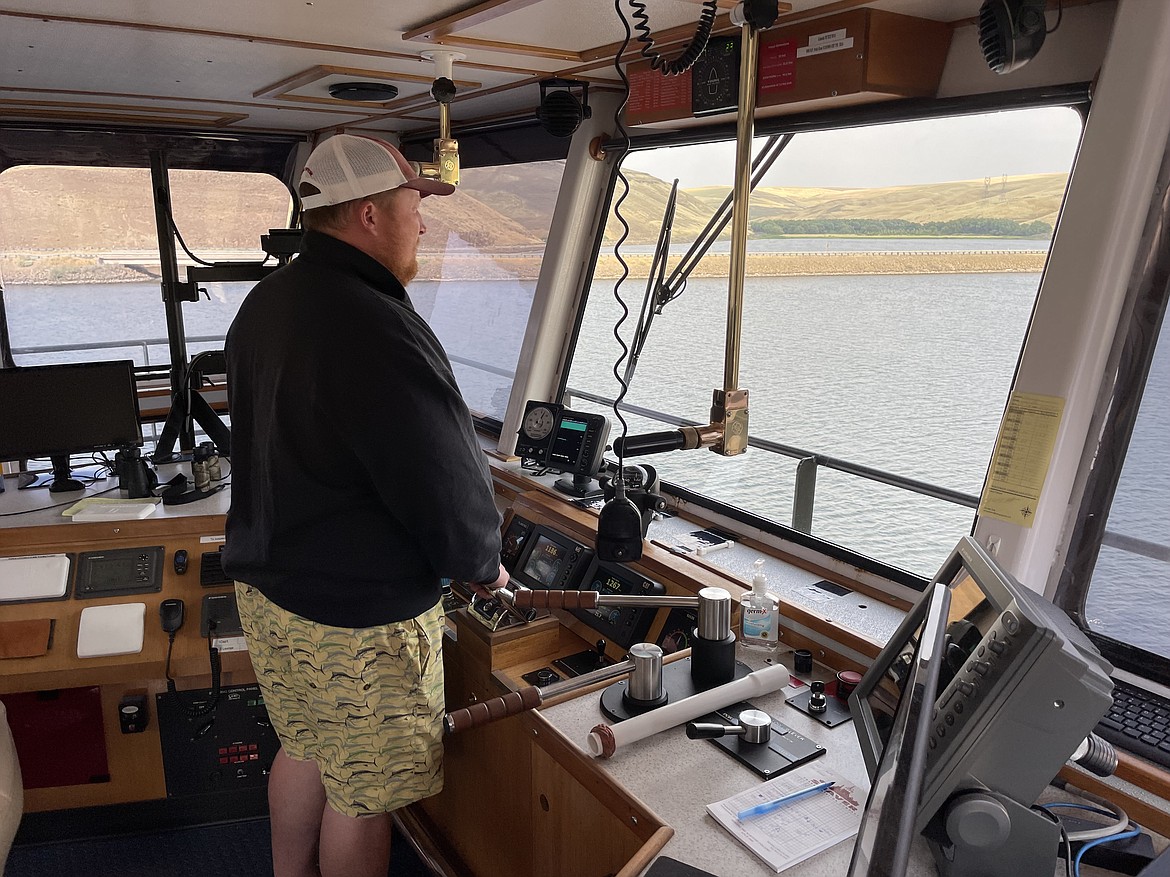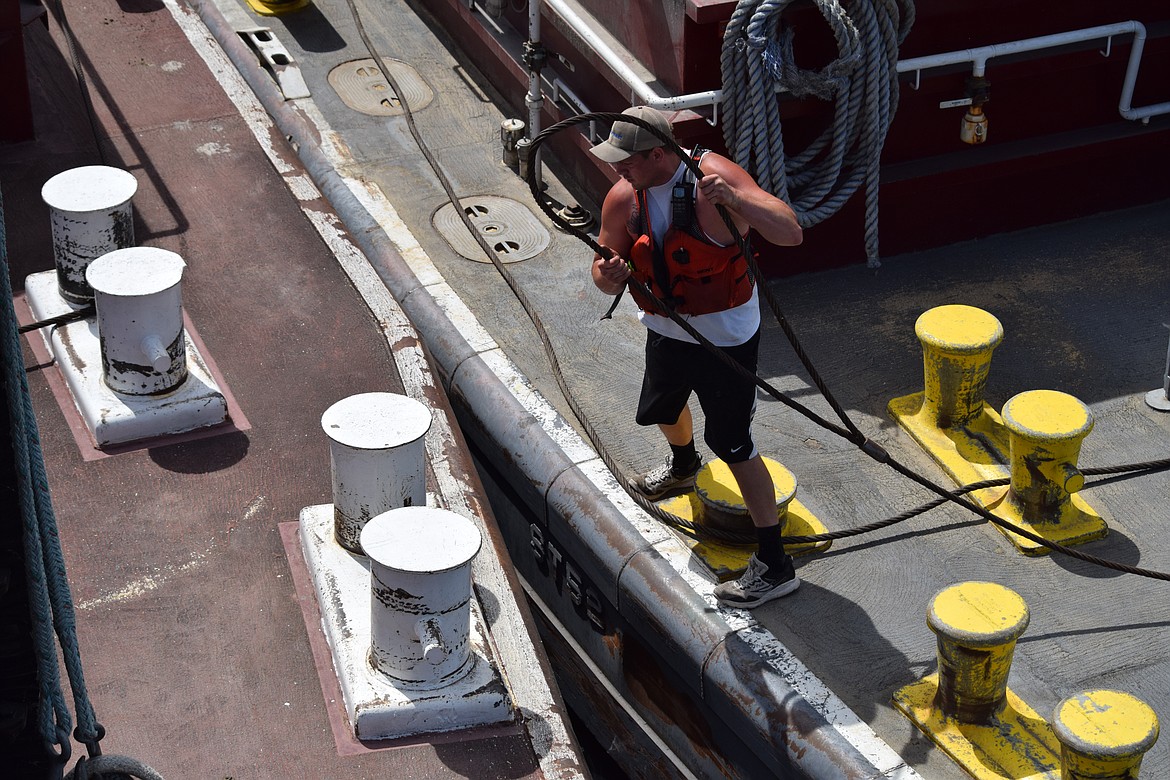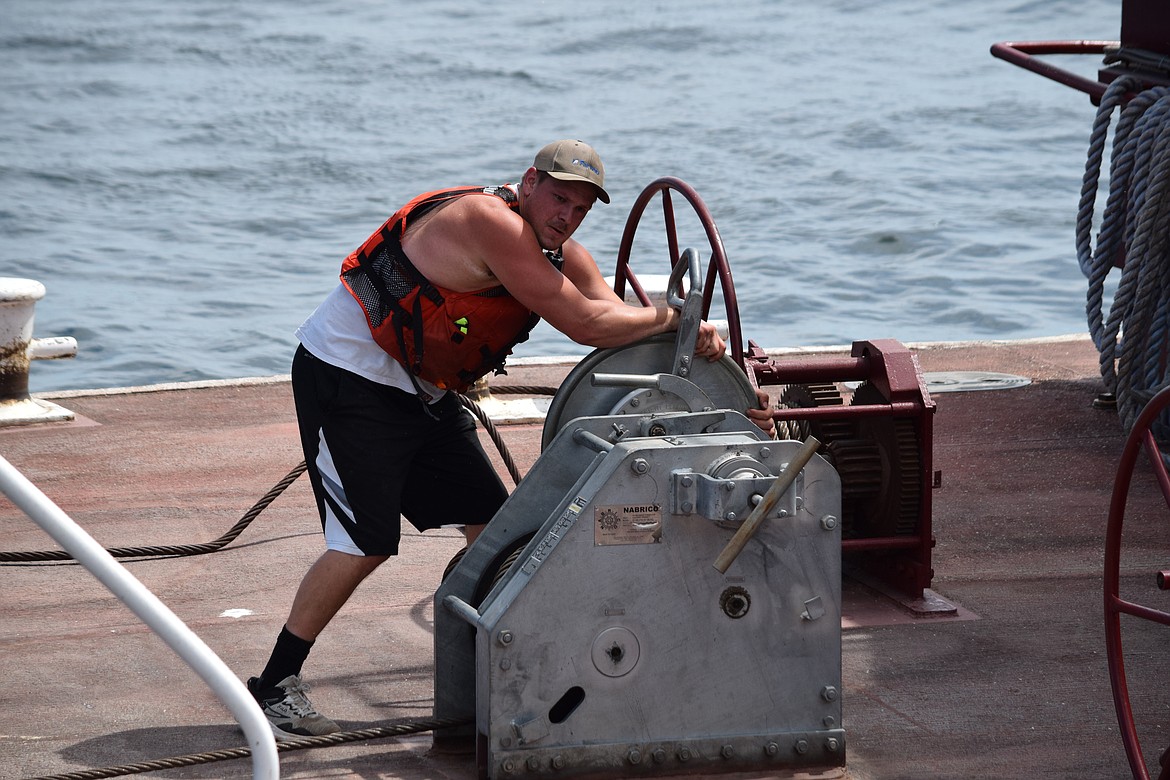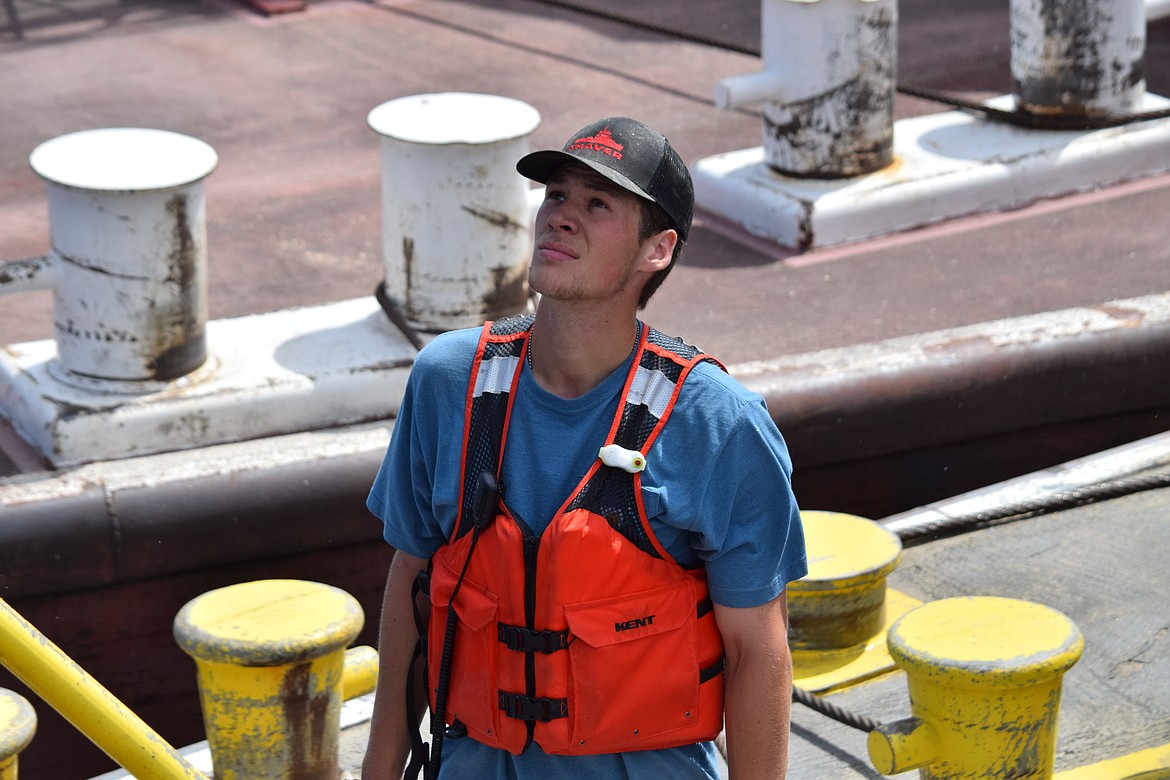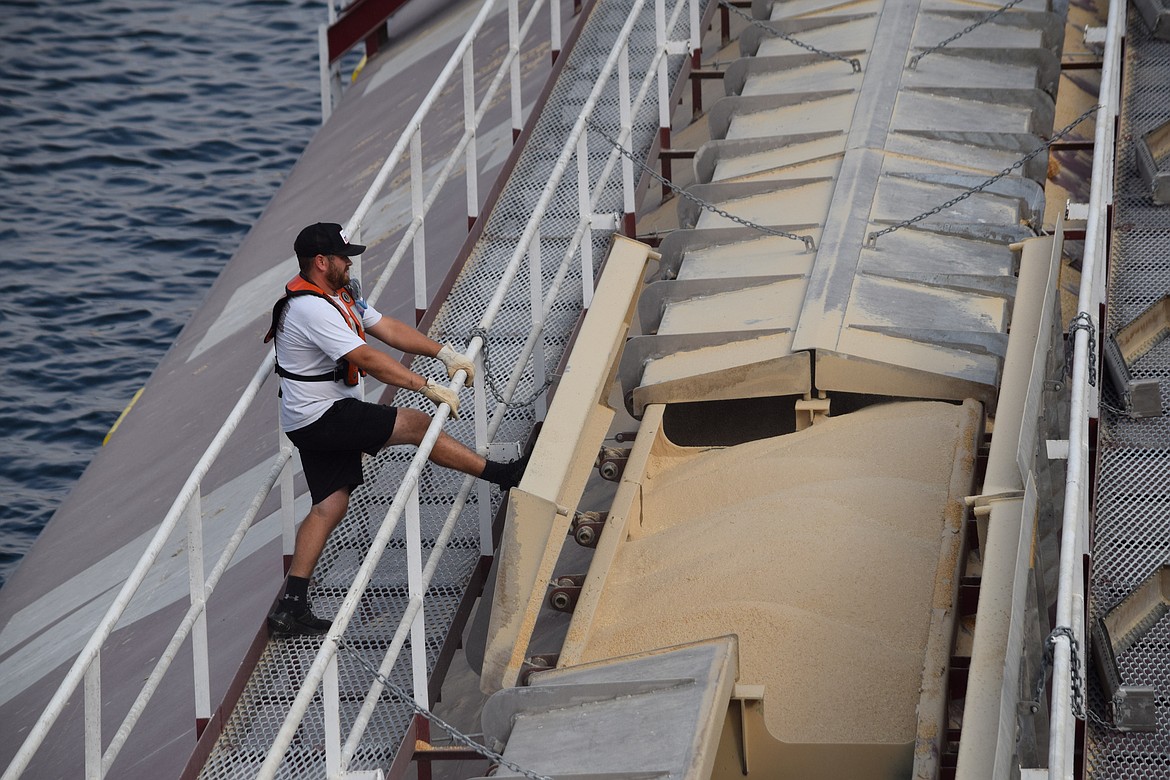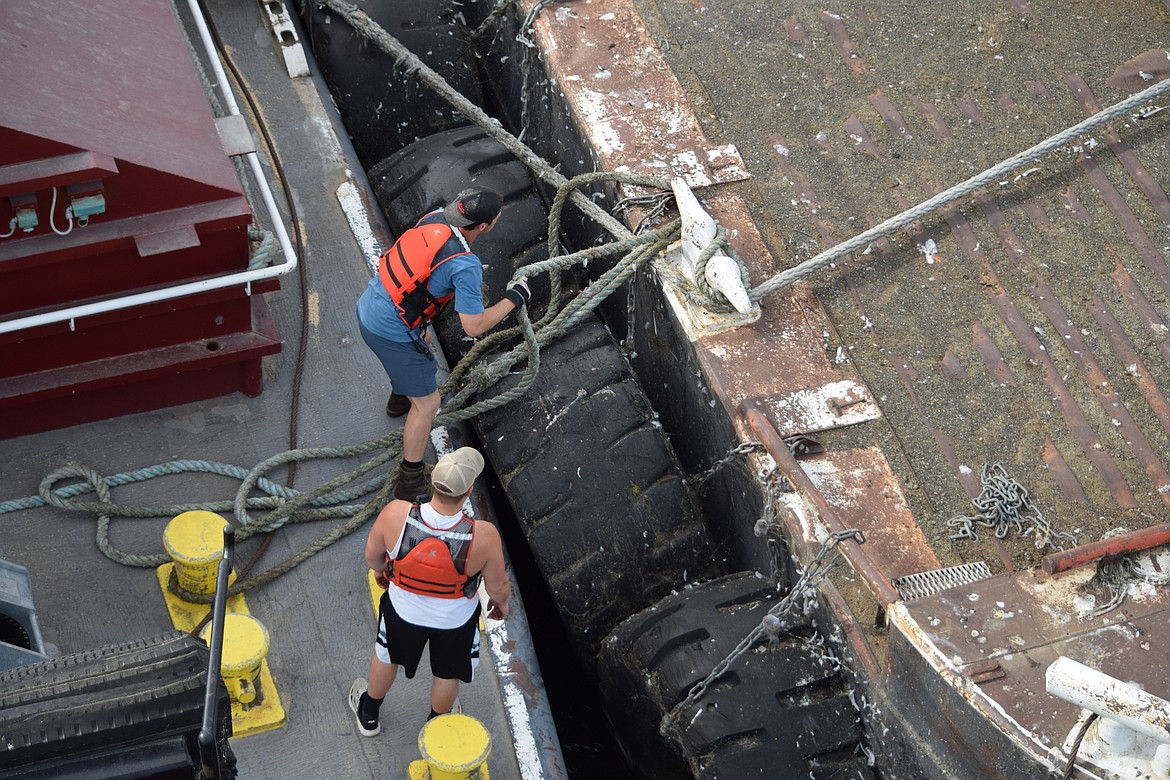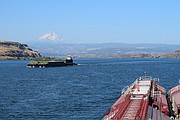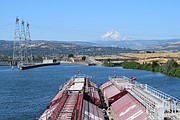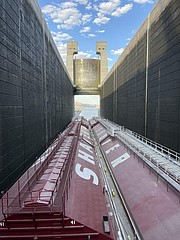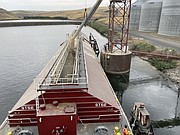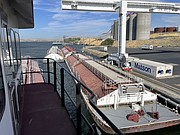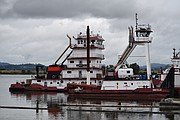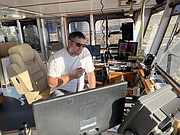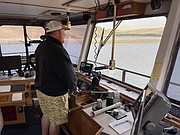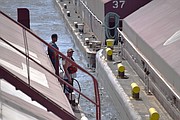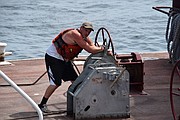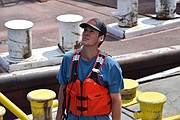Ships and piers
PORTLAND, Ore. — In 1976, Herschel Slavens, then nearly 80, sat down to write about his life, including the time he found himself nearly penniless and looking for work in the early 1920s.
“We didn’t have hardly any money so we stopped in Kennewick, Washington, and I got a job working for my cousin … who had a trucking company hauling wheat from a field to a warehouse on the Columbia River,” Slavens wrote in an unpublished memoir he shared with members of his family.
With the collapse of farm commodity prices following the end of World War I, it was a tough time to be a farmer, and Slavens — who served in Hawaii, not France, during the war — noted official estimates that as many as half the farmers in the United States went broke from between 1920 and 1922. Still, he was able to find farmwork, moving sacks of wheat in the Tri-Cities before moving on and eventually settling in Montana.
“It was put on barges and hauled to Portland,” he wrote. “The combine was pulled by about 30 horses and the wheat was put in 120-pound bags and dropped on the ground for me to pick up.”
A lot has changed in the roughly 100 years since. Combines are no longer pulled by horses, and wheat is no longer packed in 120-pound sacks to be lifted and loaded by men.
Some things, however, have not changed. Wheat is still hauled to Portland, to Kalama, to Rainier and to Longview, by barge. In fact, if anything, transporting wheat by barge down the Columbia River is even more important in 2022 than it was in 1922, largely due to the construction of the four lower Snake River dams — Ice Harbor, Lower Monumental, Little Goose and Lower Granite — in the 1960s and 1970s. Those dams made it possible to move goods by barge as far upriver as Lewiston, Idaho.
Environmental groups and Native American tribes, however, are seeking to get those four dams removed, saying the dams make it difficult for populations of Chinook, steelhead and sockeye salmon on the Snake River to migrate from their river hatcheries to the sea and back again. A recent report by the National Oceanographic and Atmospheric Administration concluded that breaching those four dams may be essential to ensuring the survivability of Snake River salmon. However, the report also notes that dam removal may not be the only way to achieve that goal.
Rep. Mike Simpson, R-Idaho, has proposed a plan to breach all four dams that would cost $33 billion. A recent report released by Gov. Jay Inslee and Sen Patty Murray estimates the cost of replacing lost power production — combined, the four lower Snake River dams can produce as much as 3,000 megawatts of power — at anywhere from $10 billion to $27 billion.
And none of that includes the additional trucks and train cars that would be necessary to haul wheat from the fields of Eastern Washington to the ports at the mouth of the Columbia River.
Getting wheat to market
According to the U.S. Department of Agriculture’s National Agricultural Statistics Service, roughly 2.3 million acres of wheat were sown in Washington in 2022. Nearly all of that is in Central and Eastern Washington. Wheat growers and sellers rely on three major modes of transportation to get their product to market — trucks, rail and barges — hauling grain by barge is by far the most cost-effective.
“When you ship cargo by truck, one gallon of diesel fuel will move 1 ton of cargo 165 miles. That same gallon in a diesel locomotive can haul 1 ton of cargo 475 miles,” said Rob Rich, vice president of maritime operations for Shaver Transportation, which hauls much of the region’s wheat by barge. “You can haul that same ton of cargo 675 miles in a barge on a gallon of diesel fuel.”
That cost difference is important, according to Washington Association of Wheat Growers Executive Director Michelle Hennings, because 90% of Washington wheat is exported, mainly to Asia. While a fair amount of Washington wheat gets to where it’s going by rail, Hennings said wheat and barley have to compete for space on trains with often higher valued, goods.
“We’re considered a low-value good for rail, and we have issues with timeliness and getting railcars,” Hennings said.
While about 10% of the total U.S. wheat crop goes to market by barge, Hennings said that 60% of Washington wheat gets to market that way. If farmers can’t ship goods by barge, then truck and rail transport rates will increase significantly, she explained.
“It’s important to have access (to the rivers), even for farmers in Lind and Davenport,” she said. “They are still affected if rail rates increase.”
‘Home away from home’
At the Pomeroy Grain Growers terminal in Central Ferry, located along a bend in the Snake River in Garfield County, a giant maroon Shaver Transportation barge sits taking on wheat. It’s been sitting there most of the morning, filling up slowly with nearly 4,000 metric tons of Eastern Washington wheat.
“It takes about eight hours to fill a barge, and about six hours to unload it.,” said Troy Moore, one of two pilots of the Shaver tugboat Lincoln.
Moore is the senior captain on this boat, and he’s been navigating the Snake and Columbia rivers for 22 years. He started out as a deckhand and worked his way up, learning all he could about the boats, the barges and the rivers. He’s joined in this voyage by pilot Andy Bradley, a 14-year veteran of the rivers who, like Moore, also started as a deckhand and worked his way up, and deckhands Sean Malloy and Harold Lively. The four crewmen are joined by Colby Glaze, a midshipman at the California Maritime Academy in Vallejo who is spending this week-long trip as a trainee to literally learn the ropes.
Moore and Bradley will alternate six-hour shifts piloting the Lincoln in its top-deck wheelhouse. The three deckhands will work as needed, mostly tying and loosening ropes, spotting for the pilot when making dam lock transits, keeping the boat clean and cooking meals. Both Lively and Malloy will spend a little time in the wheelhouse piloting the vessel to get some experience. Everyone catches sleep when they can, and the talk at the table during mealtimes is mostly about work.
In a typical rotation, the crew spends seven days on this boat, and seven days off before being assigned to a new boat to do it all over again.
“This is our home away from home,” Moore said.
That home is a family operation.
“Shaver Transportation is a sixth generation, family-owned tug and barge line, and our entire operation is on the Columbia and Snake River system,” Rich said. “We provide ship assistance services to deep draft vessels on the Columbia River, and grain barge services from Portland to Lewiston.
Rich said he started as a tugboat deckhand on the Columbia River in 1979, though not with Shaver, which he joined in 1987 as a dispatcher. Shaver tugboats provide assistance to roughly half the 1,400 ocean-going freighters that dock at Columbia River ports, though about half the company’s business involves hauling wheat by barge. Not just Eastern Washington wheat, but grain from Northern Idaho and as far away as Montana as well, shipped by truck to Lewiston and put on barges there.
Shaver has 15 tugboats, of which six are barge haulers. The Lincoln is one of Shaver’s smaller barge tugs, with two 1,500 horsepower engines — each independently controlled — and four rudders, two in front, and two in the rear. Moore and Bradley steer the boat using a combination of the engines and the rudders.
The barge sitting at Central Ferry is the first of four the crew will pick up as they make their way downriver, and at each stop, Moore has to consider how best to lash the barges together. They are only secured to each other and to the Lincoln by ropes and cables. The entire assembly of barges and boat is called a tow, and eventually, they will be pushing 13,000 metric tons of wheat.
It would take 136 rail cars to haul this much wheat, or 524 trucks when comparing the capacities of the transportation methods.
The fastest this tow will move under its own power is about 8 miles per hour, even going with the current. The Lincoln left Central Ferry late afternoon on a Monday but doesn’t arrive at its final destination in Rainier until early Thursday morning, along the way picking up and dropping off barges. It’s a slow trip down the rivers, in bright sunlight and pitch darkness, one that keeps the tow and the crew constantly in motion.
“The river’s going to take you where you want to go,” Moore said. “We just have rudders and engines to help us go along.”
Out on the river
Bradley sits in the pilot’s chair, watching both the Lincoln’s radar and the GPS navigation displays. It’s a bright sunny day outside, and the tow is making its way downriver smoothly and easily. There’s not a lot to do right now, but that doesn’t mean Bradley is not paying close attention to his instruments, the barges lashed in front of them and the river that’s carrying them.
“You don't want to get complacent,” he said. “Things can change real quick. It can go from calm and then, all the sudden, one wrong thing happens. You get some weather and then everything can change.”
Bradley said there are a lot of hazards and obstacles on the river, everything from windsurfers to shallows to narrow channels. The entire tow is 84 feet wide and over 600 feet long. The fully loaded barges sink down into the water about 14 feet. In places, the navigable portion of the river is barely 200 feet wide, and some parts or so shallow the Lincoln’s rudders churn up mud.
Along the Columbia, between Rufus and Arlington, Bradley described a hidden cluster of rocks informally called Macaroni Reef. The place got that name in the days before GPS, Bradley said, when a tugboat captain went down to the ship’s galley to make dinner of macaroni and cheese, leaving a deckhand to pilot the boat, and it ran aground and got stuck.
“Stevenson to Bonneville is the five toughest miles on the river,” he said. “There are lots of rocks, shoals and turns. It’s tough and dark at night.”
It’s also important for the crew to pay attention to how big the barges are — Shaver’s 20-grain barges are not all the same size and don’t all carry the same weight — in order to fit them together in the best way possible. Moore said he had to improvise a bit in putting this tow together when Shaver told him he was picking up a different fourth barge than originally planned.
The four barges are lashed together like a box, with the Lincoln pushing on the left two barges. It changes how the pilot has to handle the tow, Bradley said, and eventually, a good pilot develops a feel for how to properly steer a tugboat and tonnage on the river.
“This one is slightly dragging to the right, so you kind of know that you’ve got to have a bit of rudder on it,” he said. “In critical turns, you can’t be early. You’ve got to know when to stop.”
Even with all of the equipment they have, and the training they get, there’s nothing that beats simply spending time on the river, over and over again, paying attention. Observing. Getting to know the river, the boat and the cargo.
“Every job or career, you train for it. And then you can do it. But in this job, you can’t replace teaching with experience. You can’t train experience,” he said.
That experience becomes most obvious when the tow approaches a dam lock. It’s all hands on deck — literally. Malloy and Lively don their life vests, grab their radios and make their way out to the front of the tow. Because it’s 500 feet in front, the pilots cannot easily see the bow of the tow, which is designed to snugly fit inside an 86-foot-wide — only two feet wider than the tow — and 675-foot-long lock.
At the John Day Dam lock, Malloy calls out numbers to Moore over the radio.
“120 … 110 … 100,” Malloy said, telling Moore just how close the bow of the front left barge is from the long wall of the lock and how much space he has to port — the left side of the tow — so he can maneuver.
“I can’t see nothing,” Moore said. “I can’t even see the wall.”
Moore very carefully pushed the tow into the lock. If he scraped or even touched either of the sides — and there’s only one foot of space to either side of the tow — you couldn’t feel it and you couldn’t hear it. Once in, Malloy and Glaze secured the tow to a pair of floating metal bumpers attached to the wall of the lock.
Moore leans on the radio again, telling Glaze to step back. Working with ropes and cables is dangerous work, and if they snap, they can injure a deckhand. Or worse. It doesn’t help Moore had to tell Glaze several times he was lashing the tow to the bumper wrong.
“I’m not going to tell you again,” Moore spoke into the radio handset.
“Got it,” Glaze responded as he stepped back.
Moore let go of the handset and stood over the paddles that control the front and rear rudders.
“I’m going to tell him again,” he smiled.
It takes about 30 minutes for roughly 40 million gallons of water to drain from the lock, and Glaze and Malloy will go outside and untie all of those ropes. It’s tough to count how many times they do this in a day, though Glaze takes the lesson and steps back when they transit the remaining dam locks.
“I like the physical aspects, the camaraderie with the guys on the boat, especially when you get a good crew,” Malloy said later. “I enjoy being outside working physically, and then I just like being on the river. Nice views, especially at night.”
Glaze laughed about having to learn the ropes. He said things are done very differently on the maritime academy’s training ship, The Golden Bear, and he speaks with confidence about using ropes and cables on that ship and at sea.
“Here you have the winches with the barges, and I have no experience with that,” Glaze said. “It’s a whole new world.”
A summer barge trip is a fairly easy one, Moore said, even with all the rope work. The company transports grain year-round, and during blizzards, deckhands have to go out and shovel snow off the barges in order to keep the walkways clear, Moore said
It can be physically demanding and difficult work, Moore said. But it’s the work that makes a boat work.
“I’m only as good as my deck hands,” he said. “A good deckhand will make a bad operator look good and a good operator look bad.”
By Thursday, the Lincoln and its tow reached Portland, where they drop off the first of their barges. On Friday, the crew will clean up and take their week off while another crew hauls and empties back up the river to get more grain. And then get ready to crew another boat and haul some more barges in what is turning out to be a very busy harvest season.
‘I need a barge’
Phil Trochim, the upriver grain manager for Shaver Transportation, is driving through Longview when his phone rings.
“I need a barge,” the caller said. “As soon as you can get me one.”
It’s been that kind of harvest season, Trochim said, and his phone rings regularly with requests for barges. Last year’s drought and heat made for a poor harvest and a slow six months, he explained, but this year, Shaver has been constantly busy.
“We have three (or) four boats running steady,” he said. “Right now we're doing 20-plus loads a week right now during harvest. …as quick as we can turn them, we'll send them right back up.”
It’s tough, Trochim said, because like lots of companies, Shaver doesn’t have enough workers to crew its boats.
“We're actually pretty short-handed. So we have a lot of crews and double back to help out. Guys stay on the boat for 15 or 20 days,” he said.
Derek Teal, the general manager of Pomeroy Grain Growers, has several million bushels of wheat to move. Without the barges, he said, it would simply cost too much — and take too many people — to haul that wheat to market.
“It’s not even remotely feasible,” he said of taking wheat to market by truck. “For a 16 million bushel crop, we would have to have 14,545 more trucks on the roads. That’s 40 trucks per day, year-round.”
That’s just for Pomeroy, Shaver’s Rich explained. To transport the entire Eastern Washington wheat crop by truck in an average year, you’d need 40,000 more rail cars on already congested rail lines or 165,000 more trucks on already busy roads.
“Who wants that? How does that help reduce our reliance on fossil fuels?” he asked. “There is not another alternate form of transportation.”
According to Glen Squires, CEO of the Washington Grain Commission, it’s important to haul the region’s soft white wheat by barge so that the hard red wheat grown in the Upper Midwest — as well as much of the county’s soybean and corn exports — can make their way by train. Because while the Pacific Northwest contributes only a small portion of the country’s wheat output, 60% of all U.S. wheat exports ship out of Portland, he said, much of it to Asia.
“We’re talking about food going to flour mills for breads, cakes, cookies, crackers and noodles,” Squires said. “And a lot of food aid too.”
“We need the navigation system for the timely delivery of grain,” he added. “We’re strong supporters of the river navigation system.”
Charles H. Featherstone can be reached at cfeatherstone@columbiabasinherald.com
Editor’s note: Our thanks go out to Liz Kepferle and the family of Susanne Carman, Herschel Slavens’ daughter, for the use of the memoir.
The Columbiaa Basin Herald would also like to thank Shaver Transportation for allowing our staff to join their crew on the tugboat Lincoln.



